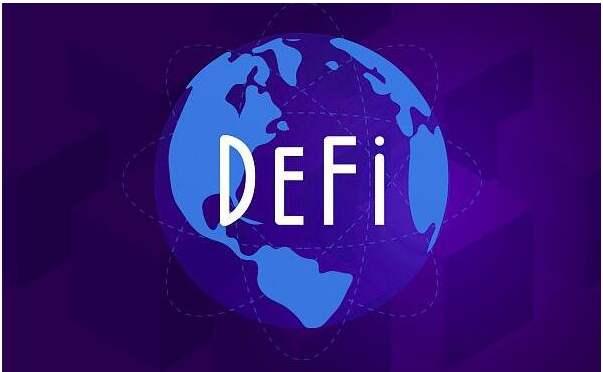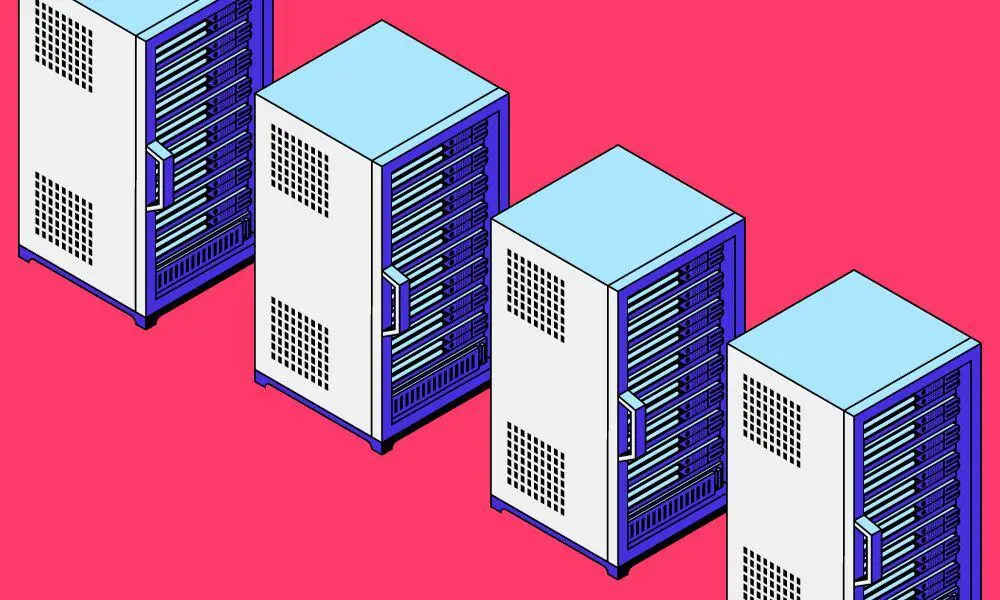Understand the five most noteworthy DeFi 2.0 protocols: Olympus, Tokemak, Alchemix, Spell, and Convex
Author: @scupytrooples, Co-founder of Alchemix
Compiled by: Lu Jiangfei, Chain News
By 2022, we can expect to see the rise of what is known as "DeFi 2.0."
As a DeFi farmer, Degen, student, and builder, I find that the vision of the future of DeFi I have in my mind is beginning to materialize. In this second wave of DeFi, many excellent projects have emerged, but the arrival of "DeFi 2.0" is mainly thanks to the early pioneers in this field, such as MakerDAO, Compound, Aave, Uniswap, Sushiswap, and yearn.finance.
Building on these DeFi giants, the next wave of new protocols is on the horizon, and the one that surprised me the most is OlympusDAO. Initially, I thought this algorithmic stablecoin protocol wouldn't amount to much, but reality gave me a resounding slap in the face; I was completely wrong.
Discovering Olympus DAO
Olympus DAO has done something that other protocols have never done before—they did not attract liquidity for the protocol through liquidity provider (LP) mining, but instead disrupted the traditional DeFi liquidity model using the concept of "protocol controlled value" and its innovative bonding mechanism.
In fact, the bond structure of Olympus DAO is designed exceptionally well. Users can easily start by setting the number of bonds they want to sell and the initial price. The bond price adjusts based on market demand; if no one buys, the price will drop until someone does. Once a bond is purchased, the price will rise, and then when market demand decreases due to the price increase, the bond price will start to fall—this model's greatest advantage is that it can always ensure supply meets demand.
On the other hand, the biggest difference between Olympus and ICOs is that the funds do not flow to the Olympus team but rather to the protocol's own liquidity: when bonds are purchased along with liquidity provider shares, the Olympus protocol essentially becomes its own market maker, earning revenue while providing liquidity.
Frankly, it wasn't until a few months ago that I truly realized liquidity mining is a double-edged sword: while liquidity mining is beneficial for the initial growth of DeFi protocols, it does not contribute to long-term sustainability. At the same time, I also found that DeFi protocols seem to have no other way to attract liquidity besides providing incentives—indeed, this was my thought before I started closely observing Olympus DAO.
Driven by curiosity, I recently began experimenting with liquidity mining for the OHM token to see what makes this protocol special, and I discovered that the solution to the DeFi yield farming problem is actually the Olympus bonds.
So, I reached out to Olympus DAO to see if they could provide their bonding technology to Alchemix. In fact, they also saw the potential for other DeFi protocols to leverage their mechanism effectively.
Now, let's take a look at how Olympus Pro operates.
How Olympus Pro Works
At this stage, if you are already part of a DeFi protocol or are considering launching one, I strongly recommend you check out Olympus Pro (OP).
Liquidity mining is very useful for early growth, but it's a bit like a drug: it feels great at first, but the more you use it and rely on it, the worse it gets. The main issue here is that a large amount of "toxic" liquidity can invade liquidity pools and affect other participants. When other participants realize this problem, they actually have little ability to make significant changes; the only winning strategy is to go with the flow. Olympus Pro (OP) addresses this issue and cleans up the "filth" floating in liquidity pools.
In the process, something magical happens. I think everyone is now very familiar with this: when the "toxicity" disappears, the community comes together to formulate strategies. Past liquidity mining was like a "man vs. man" competition, but now it has turned into a "lying on a comfortable sofa" cooperative game, and the Olympus community is the best proof of this.
Olympus Pro (OP) brings this magic to any protocol that uses its services. Of course, changing the overall trend of liquidity mining may take some time, but I truly believe that when liquidity providers engage in "diamond hands" trading, Olympus Pro (OP) can instill more confidence in holders and traders regarding the project.
Here are some examples of DeFi protocols with strong liquidity mining; I have hidden the project names and only retained the dollar trends of liquidity mining (which is more intuitive than using ETH), from which you can see how liquidity mining has influenced you during a bull market.
As a member of AlchemixFi, I am very satisfied with Olympus Pro (OP). In less than 10 days, we have already acquired bonds worth approximately $500,000, and continuing this way will allow $ALCX to control inflation more quickly.
Since we are also providing incentives in the $alUSD and $alETH markets, we will subsequently offer bonds for these markets, ensuring we have long-term liquidity and allowing people to remain confident in the platform for decades to come.
So, if you are involved in a DeFi protocol based on liquidity mining, now is the time to try Olympus Pro (OP). At least I can't think of any other solution that better utilizes liquidity mining funds.
The Magic of Tokemak
Another DeFi protocol that gives me goosebumps is Tokemak, which aims to solve the liquidity problem in DeFi and make liquidity rental more efficient than owning liquidity pools.
So far, the Tokemak protocol has not officially launched, so we cannot be 100% sure of how it operates, but I am very optimistic about this protocol. Let me explain how it works and why your protocol should consider it as the next option.
The goal of the Tokemak protocol is to become a decentralized market maker. So, what is a market maker? Essentially, market makers provide liquidity on exchanges so that others can trade with low slippage and profit from the spread. In fact, market making is not easy, but those who excel at it can reap rewards.
Some centralized finance market makers have participated in arbitrage in the DEX market, but until now, we have not seen a true decentralized market maker. The Tokemak protocol has a large reserve of ETH and USDC, allowing it to pair trade with other tokens within the protocol.
Users stake their tokens on the Tokemak protocol (the first batch of supported tokens includes $ALCX, $FXS, $TCR, $OHM, and $SUSHI), and then they receive tToken, which serves as their deposit receipt. As a tToken holder, you are eligible to earn $TOKE tokens to match the other side of the liquidity.
For liquidity providers in the Tokemak protocol, it provides them with a way to offer liquidity while minimizing the risk of impermanent loss. Not only that, but the design of the $TOKE token in the Tokemak protocol is also excellent, let me explain further:
When you hold $TOKE tokens, you can stake them in the Tokemak protocol's "reactor." The more $TOKE tokens you delegate to a certain "reactor," the more available liquidity can be directed to that token. Even cooler, liquidity guides can also receive incentives after providing an appropriate amount of liquidity.
If liquidity is high but trading volume is low, it means you have allocated too much liquidity, and vice versa. The trick here is to get your liquidity and trading volume just right, and for liquidity guides who do this, the Tokemak protocol will reward them. As a liquidity guide, if you want to maximize your returns, you must allocate liquidity in the smartest way!
Looking ahead, I absolutely believe that the largest holders of $TOKE tokens will be some decentralized autonomous organizations (DAOs). I will delve deeper into this topic in other posts, as the game theory involved is very cool and requires a longer explanation.
For DeFi protocols using liquidity mining, just know that using the Tokemak protocol can calculate the dollar price per unit of liquidity and is more efficient than allowing your own liquidity pools.
Understanding the Next Generation of Collateralized Debt Position Platforms: Alchemix and Spell
Now let's talk about the next generation of collateralized debt position (CDP) platforms. From my completely impartial perspective, I believe that @AlchemixFi and @MIM_Spell will maintain a leading position in the development of CDP platforms. If you have been following me and have seen some of my analyses, you have probably heard a lot about Alchemix. Alchemix invented unliquidatable, self-repaying loan products. Pretty cool, right?
The second version of Alchemix's product will support multi-collateral and multi-strategy assets. Now, people can put their tokens into yield aggregators like Yearn, Pickle, Harvest, etc. Alchemix will support these protocols and expand the collateralized debt position functionality to them.
Additionally, we will expand Alchemix's synthetic products through alBTC and many other assets in DeFi—I affectionately call it "Altchemix." There is huge potential for decentralized autonomous organizations using Alchemix in the treasury, and we are very much looking forward to Altchemix's performance, hoping for more improvements to the $ALCX token in 2022.
The Magic of Convex
The last DeFi protocol to discuss is ConvexFinance, which can be said to be built on the shoulders of CurveFinance, one of my personal favorite DeFi protocols. In my view, Convex and their veCRV governance token design are excellent and make it one of the most profitable DeFi protocols.
For those who are not very familiar with the Curve protocol, let me give a brief explanation: Curve liquidity mining is entirely controlled by the voting of liquidity tokens in the Curve measurement system, while in the Convex protocol, veCRV holders vote to support (LP mining pools) metrics and guide each metric.
On the other hand, the more veCRV tokens you hold, the higher the yield of the tokens deposited in the liquidity pool. The Convex protocol is built on this system; they hold a large amount of veCRV and are prepared to extend veCRV to everyone. The Convex protocol plans to issue its own $CVX token, which will also have some great features. Ultimately, the Convex protocol will become the best place to place stable assets on Ethereum, locking some $CRV into veCRV and distributing the rest to users.
Thanks to the innovations brought by AndreCronjeTech and VotiumProtocol, veCRV and CVX holders have become powerful liquidity guides. Even if people sell these tokens for rewards, the passive income is enough to compensate.
In summary, the next generation of protocols will make DeFi more capital efficient, and the token economic models will become more refined, allowing all DeFi protocols to achieve sustainable development. Therefore, I am very optimistic about the protocols mentioned in this article.
To conclude: DeFi 2.0 is fantastic.









